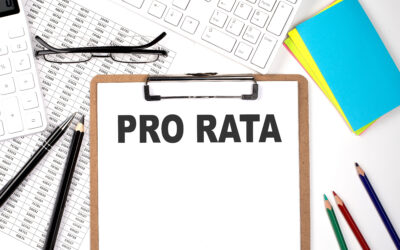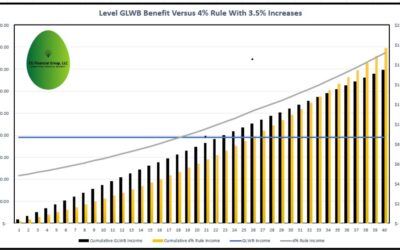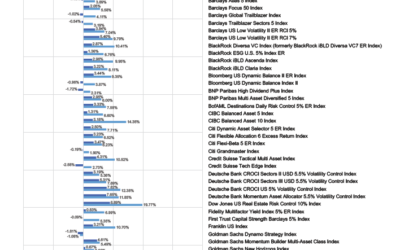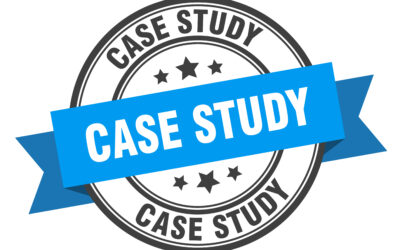I wanted to post this article that I contributed to in Life Annuity Specialist. I want to post this in the “CG Academy” because this speaks to what I have been pushing for sometime, the plain/vanilla S&P 500 strategies. There is a lot of “smoke and mirrors” with some volatility controlled strategies and caps in the double digits on S&P 500 strategies is a powerful story!! Enjoy the article.
As yields climb and carriers can afford to be more generous, agents revert to the indexes they know best.
By Cyril Tuohy|February 15, 2023
As buyers migrated to safer annuities last year, they also looked for familiar, understandable indexes to link returns to.
In the third quarter of 2022, for every $100,000 sunk into a fixed-indexed annuity, $44,000, or 44%, went to the S&P 500 Index, according to Wink’s Sales & Market Report. That was up from 32.8% in the third quarter of the previous year.
Hybrid indexes, which include volatility-controlled indexes, scooped up 41.4% of premiums, down from 60.1% a year earlier.
“I am expecting sales of indexed annuities, allocated to hybrid indices, to be down,” said Sheryl Moore, CEO of Wink, publisher of Wink’s Sales & Market Report.

With interest rates on the rise, “we are seeing a trend of allocations returning to the S&P 500, which is the most widely recognized index, and therefore easier to understand in a sales pitch,” Moore said.
At the end of last year there were 157 different indexes upon which consumers could earn interest, according to Wink’s AnnuitySpecs tool. Most of the indexes lost value in 2022, including the S&P 500, which fell 19%. Still, that didn’t hurt owners of fixed-indexed annuities, which are structured to protect principal.
Of the roughly 100 volatility indexes used in fixed-indexed annuities that are tracked by the National Association for Fixed Annuities, only eight eked out gains last year, a year in which broad measures of stocks and bonds both fell.
The Wisdom Tree Siegel Strategic Value Index did best, rising 6.7%, while the Nasdaq Fast Convergence Index came in last with a loss of 21%, according to the group.
Easily Grasped
With interest rates up and stock volatility higher, plain vanilla S&P 500 strategies are offering caps as high as 13%, Charlie Gipple, CEO of CG Financial Group, said in an interview. “Agents are saying ‘That’s what I’m going to go with,’ and staying away from hard-to-understand volatility indexes,” he said.

Even with the seeming pullback in volatility indexes, Gipple doesn’t expect insurers to back off. “I don’t see it slowing down anytime soon,” he said.
Security Benefit Life last month added new features to its Strategic Growth series of fixed-indexed annuities, including an index designed to react to the rate of inflation. National Western Life last summer issued its New Frontiers fixed-indexed annuity featuring the J.P. Morgan Factor Focus Index.
As more people age and look to generate more income, indexes providing gains in fixed-indexed annuities and indexed universal life products will continue to grow, said Chuck DiVencenzo, president of the National Association for Fixed Annuities.
What’s important about the volatility control indexes is that agents have choices for clients with different needs, said DiVencenzo. Variables and the expansion in the number of indexes has allowed them to be more relevant in terms of designs and helping individuals get to their goals, he said. “We’ll continue to see growth as more people get into the age bracket,” DiVencenzo said.
Volatility control indexes are designed so that market drops and gains remain in a more limited range, and when interest rates were low agents liked to sell them because they came without a cap, which limits the returns available when indexes rise. A 5% target volatility index means that the index is one-third as volatile as the S&P 500 in any given year.
Diversification
Higher interest rates have led to the launch of new “high volatility target” indexes, said Marie-Laure Chandumont, managing director at Barclays. But some have also come with a “volatility adjustment” factor, a monthly cap or variable fees, she said.
“Artificial Intelligence has been added to complement existing investment plays such as momentum, low volatility, growth and value,” said Chandumont in an email. “This allows agents to diversify the source of performance.”
Laurence Black, managing director of The Index Standard, which index ratings and forecasts, said the advantage of adding new volatility indexes to fixed-indexed annuities is that it diversifies the investment choices available to buyers.

“Every year we’ve seen new things get added,” he said. Two years ago, asset managers were releasing indexes designed to react to “risk sentiment” signals. More recently indexes with intraday risk control features hit the market, as well as indexes with the ability to “go short,” a technique used by hedge funds to profit when markets fall.
There were 22 new indexes introduced to the annuity market last year and Black expects that a few more than that will be introduced in 2023.
“The advantages of these is that you can add them as a diversifier to your core indexes,” Black said. “The S&P 500 and the Nasdaq have had a great 10 years, but who knows where they will be in the next 10 years?”
Cyril Tuohy
Reporter
Life Annuity Specialist
Mobile: (917) 828-6586
Money-Media, A Financial Times Company
330 Hudson Street, 7th Floor
New York, NY 10013














0 Comments